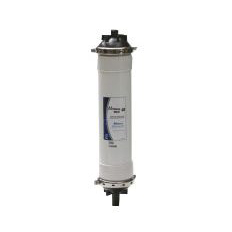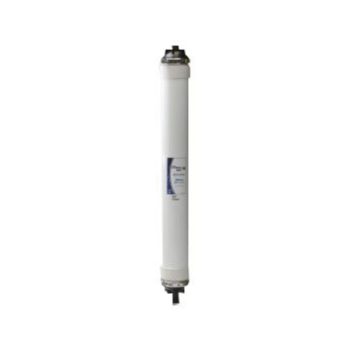Ultrafiltration of water
Ultrafiltration of water. Ultrafiltration occurs on tubular membranes made of polysulfone with a pore size of 0.002 to 0.1 microns at a pressure of 1-3 bar. This process is used for wastewater treatment, surface water treatment and purification of water recycling plants. Surface water treatment Surface water is mainly treated by means of precipitation and filtration with precoagulation. Much more effective use of ultrafiltration systems in this industry.
Ultrafiltration more effectively removes pollutants of man-made type, colloids, algae, suspended solids, as well as viruses and bacteria from water. With precoagulation cleaning effect increases, along with this method is insensitive to changes in the dose of coagulant since flakes are filtered equally, regardless of their size, which cannot be said of sand filters. With ultrafiltration cleaning with coagulant no more time is required for the formation of large flakes and there is no need for a flaking chamber. The quality of water after treatment with ultrafiltration is much higher compared to standard methods.
-
Hydranautics membrane elements
HYDRANAUTICS HYDRAcapMAX-40 Ultrafiltration membrane
3,080 $ Add to cart -
Hydranautics membrane elements
HYDRANAUTICS HYDRAcapMAX-60 Ultrafiltration membrane
3,710 $ Add to cart -
Hydranautics membrane elements
HYDRANAUTICS HYDRAcapMAX-80 Ultrafiltration membrane
4,640 $ Add to cart
Water disinfection
Standard ultrafiltration modules provide removal of bacteria and viruses at a level of at least 99.99. In comparison with traditional methods of water disinfection (ultraviolet disinfection, chlorination, ozonation, etc.), ultrafiltration physically removes microorganisms from water. This is due to the fact that the pore size in the ultrafiltration membrane is much smaller than the size of viruses or bacteria (virus - 0.02...0.4 microns, bacteria - 0.4...1.0 microns, pore - 0.01 microns). Microorganisms in water are not able to pass through such pores. Thus, primary chlorination of water is not required, and disinfection is carried out immediately before the delivery of water to the consumer. At the same time, the water is not contaminated by by-products of chlorine's effect on microorganisms.
Application before reverse osmosis
The use of ultrafiltration modules in reverse osmosis systems as pre-filters allows to do without complex mechanical pre-treatment.
At the same time, with traditional clarification technology, the water contains a significant amount of large molecular weight "organics", which can block the pores of reverse osmosis membranes. Ultrafiltration allows reverse osmosis systems to work with water that has a very high potential for biofouling, such as treated municipal wastewater.

Untreated tap water contains mechanical impurities, metals, bacteria, pesticides, chemicals in varying amounts that accumulate in the body and can cause various diseases.

Water treatment helps get rid of the unpleasant taste and odor that appear as a result of an increase in the concentration of inorganic and organic substances in the composition of such water.

Lithuanian water leads to the accumulation of scale on the heating surfaces of electrical appliances, consequently reducing their thermal conductivity. This accelerates appliance failure and increases energy costs.

It is known that the consumption of clean water is extremely important for maintaining health. That is why purified water is necessary for a person to protect himself from many diseases and to continue an active life without doctors and pills.
own enterprise
customized solutions
operational experience
and installation









